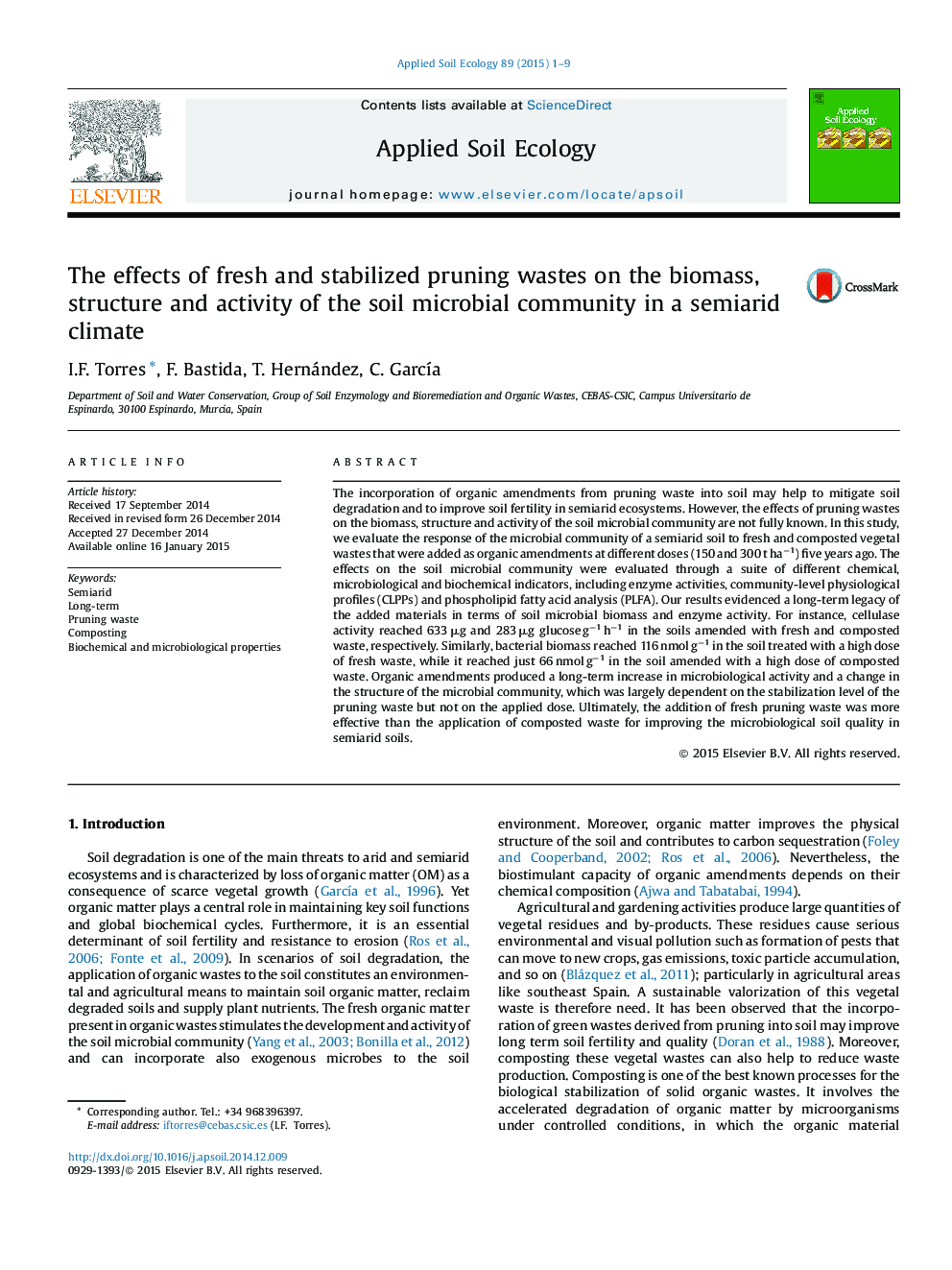| کد مقاله | کد نشریه | سال انتشار | مقاله انگلیسی | نسخه تمام متن |
|---|---|---|---|---|
| 4382025 | 1617794 | 2015 | 9 صفحه PDF | دانلود رایگان |
• Semiarid soil amended with fresh and stabilized pruning waste at two doses was used.
• Effects of pruning wastes on the soil microbial community were studied.
• Long-term effect of the added materials on microbial community was evidenced.
• Material stabilization was more influence on microbial community than applied dose.
The incorporation of organic amendments from pruning waste into soil may help to mitigate soil degradation and to improve soil fertility in semiarid ecosystems. However, the effects of pruning wastes on the biomass, structure and activity of the soil microbial community are not fully known. In this study, we evaluate the response of the microbial community of a semiarid soil to fresh and composted vegetal wastes that were added as organic amendments at different doses (150 and 300 t ha−1) five years ago. The effects on the soil microbial community were evaluated through a suite of different chemical, microbiological and biochemical indicators, including enzyme activities, community-level physiological profiles (CLPPs) and phospholipid fatty acid analysis (PLFA). Our results evidenced a long-term legacy of the added materials in terms of soil microbial biomass and enzyme activity. For instance, cellulase activity reached 633 μg and 283 μg glucose g−1 h−1 in the soils amended with fresh and composted waste, respectively. Similarly, bacterial biomass reached 116 nmol g−1 in the soil treated with a high dose of fresh waste, while it reached just 66 nmol g−1 in the soil amended with a high dose of composted waste. Organic amendments produced a long-term increase in microbiological activity and a change in the structure of the microbial community, which was largely dependent on the stabilization level of the pruning waste but not on the applied dose. Ultimately, the addition of fresh pruning waste was more effective than the application of composted waste for improving the microbiological soil quality in semiarid soils.
Journal: Applied Soil Ecology - Volume 89, May 2015, Pages 1–9
